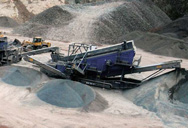
A fluctuating solution to the dolomite problem Science
2023.11.23 The process moves the entire surface slowly toward order, on which a new layer of dolomite can assemble (see the figure). Crystallographic studies of geological formations of calcium-magnesium carbonate suggest that this ordering can last about 40
consulter en ligne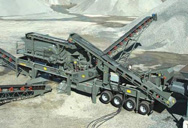
A rapid and environment-friendly process for dolomite
2024.1.1 Dolomite calcination Joule-heating CO2 emissions Decomposition mechanism 1. Introduction
consulter en ligne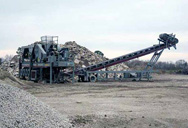
The steam-assisted calcination of limestone and dolomite for
2022.8.20 Dolomite is a mixed calcium and magnesium carbonate. It is a source of CaO, MgO and Mg(OH) 2 production. MgO and Mg(OH) 2 are also important raw
consulter en ligne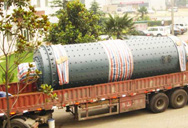
Calcium Carbonate Formation and Dissolution Chemical
2007.1.30 New insights into the dolomitization and dissolution mechanisms of dolomite-calcite (104)/(110) crystal boundary: An implication to geologic carbon
consulter en ligne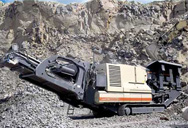
Heat-Induced Dolomitization of Amorphous
ACS Open Access. We report a method to synthesize dolomite [CaMg (CO] from amorphous calcium magnesium carbonate (ACMC) via solid-state transformation. When ACMC is heated in air, it does not crystallize into
consulter en ligne
Preparation of Needle like Aragonite Precipitated
2016.4.25 is successfully prepared via a simple carbonization process. The effects of carbonization time, temperature, and CO2 flow rate on the aragonite crystal morphology
consulter en ligne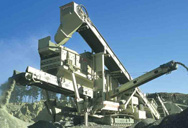
Flow, dissolution, and precipitation in dolomite - AGU
2017.10.4 ization as a one-step process in which dolomite is replaced by the formation of calcite. In contrast, Kenny [1992] considers dedolomitization as a two-step
consulter en ligne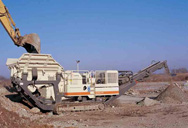
PAPER OPEN ACCESS Related content Comparison of
2020.4.4 carbonate from dolomite. This process uses carbon dioxide from the result of calcinations process so it makes this process environment friendly. Separation
consulter en ligne
Dolomite and Dolomitization SpringerLink
2016.1.1 Dolomite is a trigonal–rhombohedral, ordered Ca, Mg carbonate mineral (CaMg (CO 3) 2) occurring primarily in sedimentary and metamorphic
consulter en ligne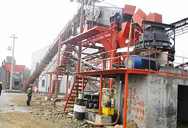
Amorphous Calcium–Magnesium Carbonate (ACMC) Accelerates Dolomitization ...
The challenge to produce dolomite CaMg(CO3)2 at low temperature (20–35 °C) over laboratory time scales so far has remained unsuccessful, which has led to long-lasting scientific debates in the last two centuries. This mineral exerts a major control on the natural carbon dioxide sequestration into various sedimentary, basaltic, and mantellic rocks. The
consulter en ligne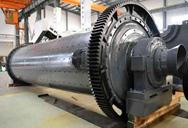
Dolomitization - an overview ScienceDirect Topics
Dolomitization is another diagenetic process that increases the strength of barrier reefs, allowing them to persist for tens of million of years as in West Tuamotu Archipelago (Humbert and Dessay, 1985). ... Dolomite is a carbonate mineral composed of calcium magnesium carbonate [CaMg(CO 3) 2] (Fig. 5.64). The term is also used to describe the ...
consulter en ligne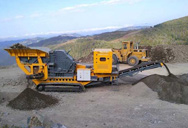
Activation of Dolomite Flotation by Ferrous
2023.1.30 The major problem with Carlin-type gold deposit flotation is that the high dolomite content in the concentrate decreases the quality of gold. Further, the activation mechanisms involved in dolomite flotation
consulter en ligne
Dolomite: Identification, Pictures Info for Rockhounds
2024.1.24 Dolomite is formed when the calcium in limestone is gradually replaced by magnesium. Magnesium-bearing water filters through limestone and replaces about half of the calcium in limestone, turning it into calcium-magnesium carbonate (the mineral dolomite). This process, called dolomitization, is still poorly understood.
consulter en ligne
Dolomitization Carbonate, Sedimentary, Diagenesis
dolomitization, process by which limestone is altered into dolomite; when limestone comes into contact with magnesium-rich water, the mineral dolomite, calcium and magnesium carbonate, CaMg(CO 3) 2, replaces the calcite (calcium carbonate, CaCO 3) in the rock, volume for volume.Dolomitization involves recrystallization on a large scale. The dolomite
consulter en ligne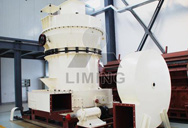
Relevant influence of alkali carbonate doping on the thermochemical ...
2022.1.1 L/D represents the calcium precursor (limestone or dolomite); A represents the alkali carbonate adopted; The last number x denotes the molar ratio of Me:(Ca + Mg). Download : Download high-res image (210KB) Download : Download full-size image; Fig. 1. Schematic of the synthetic process of alkali carbonate modified limestone/dolomite.
consulter en ligne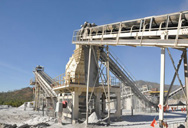
Calcium Carbonate Formation and Dissolution Chemical
2007.1.30 Process-Specific Effects of Sulfate on CaCO3 Formation in Environmentally Relevant Systems. ... Calcium Carbonate Morphology and Structure in the Presence of Seawater Ions and Humic Acids. ... New insights into the dolomitization and dissolution mechanisms of dolomite-calcite (104)/(110) crystal boundary: An implication
consulter en ligne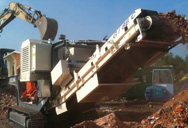
Dolomite and Dolomitization SpringerLink
2018.1.1 Dolomite is a trigonal–rhombohedral, ordered Ca, Mg carbonate mineral (CaMg (CO 3) 2) occurring primarily in sedimentary and metamorphic rocks.Dolomitization is the process in which Mg ions replace Ca ions in a calcium carbonate mineral.
consulter en ligne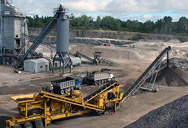
Effect of pH Cycling and Zinc Ions on Calcium and
2021.7.5 The formation of dolomite is very challenging in the laboratory under ambient conditions due to kinetic inhibition. The goal of this study was to test the impact of pH cycling and zinc ions on the formation
consulter en ligne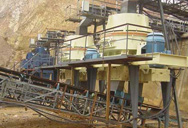
Concrete Modification for Hot Weather Using Crushed Dolomite
2023.9.27 The processing of dolomite rocks generates a huge amount of waste. The production of carbonate aggregate forms about 30% of dolomite quarry waste. ... This is due to the presence of calcium carbonate (CaCO 3) in dolomite . Some studies show that calcium carbonate in small dosages can react with the aluminates of the clinker to form ...
consulter en ligne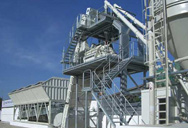
Calcium Carbonate - ScienceDirect
2016.1.1 Calcium carbonate is a chemical compound with the formula CaCO3 formed by three main elements: carbon, oxygen, and calcium. It is a common substance found in rocks in all parts of the world (most notably as limestone), and is the main component of shells of marine organisms, snails, coal balls, pearls, and eggshells.
consulter en ligne
Applied Sciences Free Full-Text The Processing of Calcium
2021.5.6 Every year a million tonnes of calcium rich agro and industrial waste are generated around the whole globe. These calcium rich waste like finger citron, shells of cockle, mussel, oysters etc., and egg shell are biological sources which have various organic compounds. The inorganic calcium rich waste includes gypsum, dolomite, sludge etc.,
consulter en ligne
Facile Two-Step Deposition of Calcium Oxalate Film on Dolomite
2022.5.20 The deposition of a calcium oxalate layer on dolomite demonstrates potential application in stone culture heritage conservation. However, due to insufficient coverage and the presence of cracks, the film’s usefulness is restricted. In this investigation, we used a simple two-step procedure to create a cohesive and uncracked film. The
consulter en ligne
Flow, dissolution, and precipitation in dolomite - AGU
2017.10.4 dissolution of dolomite is a (slow) reaction rate limited process at room temperature [Lund et al., 1973]. The main aim of the current experimental research is to understand the evolution of hydraulic conductivity and flow patterns, caused by concurrent dissolution of dolomite and precipi-tation of calcium carbonate, in porous dolomite rocks. In
consulter en ligne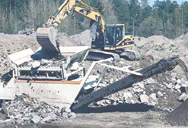
(PDF) Production of precipitated calcium carbonate particles
2017.1.1 The aim of this study was to produce the precipitated calcium carbonate (PCC) with different morphologies from dolomite ore (CaMg(CO3)2) by means of leaching and carbonation method.
consulter en ligne
Chapter 5 LIMESTONES - MIT OpenCourseWare
2024.1.22 2. CARBONATE MINERALS 2.1 About sixty minerals have the carbonate ion in their composition. But there are only three really important carbonate minerals: calcite, aragonite, and dolomite. (In the parlance of mineralogy, the first two are said to be polymorphs.) And aragonite is unimportant in ancient rocks, because it reverts to calcite
consulter en ligne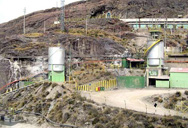
An Overview of Calcite Recovery by Flotation - Springer
2020.9.23 In general, precipitated calcium carbonate (PCC) is used as a mineral filler in paper industries; while natural calcite (CaCO3) ore is also suitable for industrial use if it is a finely ground high-grade material. Naturally, calcite is found in the form of high- or low-grade ores and it is one of the most widely distributed industrial minerals on the earth’s
consulter en ligne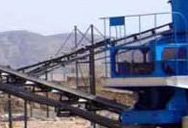
Simultaneous production of magnesium carbonate and calcium carbonate ...
1979.10.1 Simultaneous recovery of calcium carbonate and magnesium carbonate from dolomite -- Flow Chart. MATERIALS AND METHODS Equipment On the basis of process parameters available from laboratory studies, an experimental set-up to process a batch of 10 kg of dolomite was designed and fabricated.
consulter en ligne
Dolomite (Mineral) - an overview ScienceDirect Topics
Dolomite, a concoction of calcium and magnesium carbonate with a molecular formula of CaMg(CO 3) 2, is found abundantly in igneous and epimorphic rocks in ocean beds (Varjani, 2022). Dolomite impregnated with NiO and calcined with CaO and MgO is an efficient catalyst for the upgrading of syngas into hydrogen-rich and tar-free combustible gas ...
consulter en ligne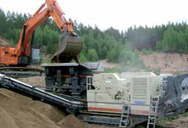
Remineralization and Stabilization of Desalinated
2021.10.18 Classical water stability is evaluated with respect to its calco-carbonic equilibrium which looks at the balance of calcium hardness, alkalinity and pH to determine whether the water has a tendency to
consulter en ligne
Polymers Free Full-Text On the Use of Dolomite
2022.7.13 In another work, the addition of nano calcium carbonate and nanoclay to high-density polyethylene (HDPE) significantly improved the matrix’s elastic modulus and indentation modulus . As opposed to the
consulter en ligne
Preparation of nano-sized calcium carbonate in solution mixing process ...
2021.10.1 1. Introduction. Limestone, marble and chalk are all composed of calcium carbonate with the chemical formula CaCO 3.It is a polymorphous, variform compound [1].In the precipitation of CaCO 3, six solid-state phases could be obtained, including three crystalline patterns (namely, calcite, aragonite and vaterite), two hydrates of
consulter en ligne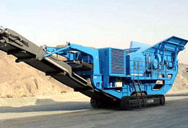
Simultaneous production of magnesium carbonate and calcium carbonate ...
1979.10.1 By use of a recarbonation process, it is possible to separate magnesium carbonate and calcium carbonate from dolomites/dolomitic limestones. Magnesium carbonate can be used for manufacturing basic refractories and magnesium chemicals; the portion rich in calcium carbonate can be used for cement manufacture if the MgO content
consulter en ligne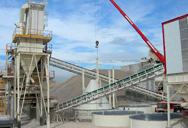
Dolomite and Dolomitization SpringerLink
2016.1.1 Dolomite is a trigonal–rhombohedral, ordered Ca, Mg carbonate mineral (CaMg (CO 3) 2) occurring primarily in sedimentary and metamorphic rocks.Dolomitization is the process in which Mg ions replace Ca ions in a calcium carbonate mineral.
consulter en ligne
Nanoscale Pathway of Modern Dolomite Formation in a
Dolomite [CaMg(CO3)2] formation under Earth surface conditions is considered largely inhibited, yet protodolomite (with a composition similar to dolomite but lacking cation ordering), and in some cases also dolomite, was documented in modern shallow marine and lacustrine, evaporative environments. Authigenic carbonate mud from Lake Neusiedl, a
consulter en ligne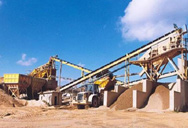
Magnesium Ions Direct the Solid‐State ... - Wiley Online Library
2022.3.20 1 Introduction. Biomineralization processes demonstrate that it is possible to achieve exceptional control over crystallization. This is well-illustrated by the calcium carbonate system, in which organisms select the polymorph with perfect fidelity, tune the structure from single crystals to polycrystalline materials, generate complex
consulter en ligne
>> Next:Silice Usine De Traitement De Sable Dans La Pierre De Concassage
- gambar dan skema mesin pemecah batu
- sable de fer broyage, broyeur, maille 300
- prix de fabrication de materiel de mines de charbon
- broyeur à marteaux mmt 1300
- sable station de lavage mobile pour la venteCalcium Carbonate
- concasseur de minerai commentaires
- broyeur de pierres telesmit tahun 2015
- broyeur de pierrescentre de l'extraction du charbon
- outils de pierre de carrière galerie carrière de calcaire
- ligne de production de poudre prix de meuleuse
- Concasseur Inclure Concasseur
- types de pierres et de roches pour la constraction de plnat
- Cameroun de fabrication de sable
- Afrique concasseur de roche totale afghanistan
- details des concasseurs Indonésie cône